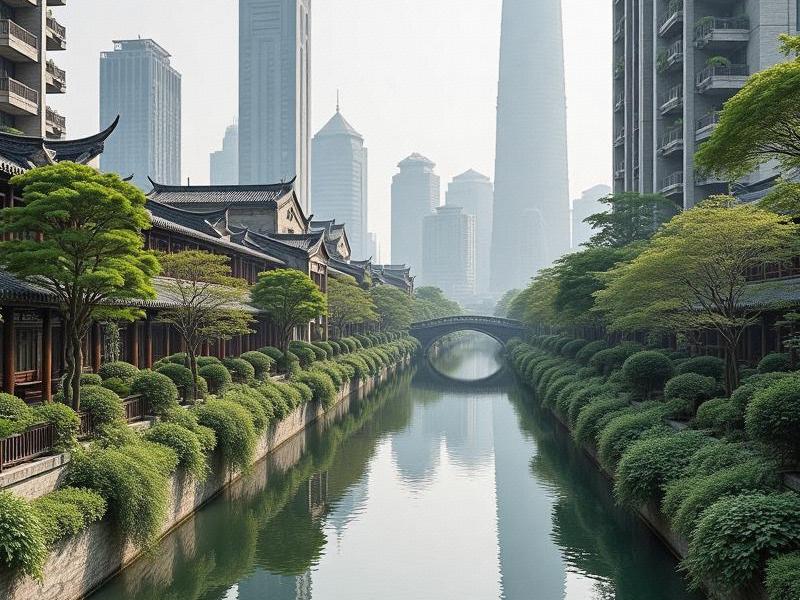This investigative feature explores how Shanghai is reinventing urban ecosystems through AI-managed waterways, blockchain heritage preservation, and self-healing concrete technologies that blend thousand-year-old water management wisdom with quantum-age innovations.

The Paradox of Progress
Beneath Shanghai's glittering skyscrapers, 400 ancient waterways once mapped by Ming dynasty engineers now flow with revolutionary potential. The city's "Digital Grand Canal" project has transformed these historical arteries into a living laboratory where:
- AI-controlled sluice gates optimize tidal patterns using Song dynasty records
- Nanobots clean polluted sediments while preserving archaeological strata
- Blockchain water rights systems honor ancestral irrigation customs
Chapter 1: The Huangpu Codex
Shanghai's liquid spine now functions as a smart infrastructure nexus:
- Self-Regulating Embankments: Concrete embedded with capillary hydrogel that mimics ancient bamboo root systems
- Fluorescent Algae Sensors: Bioluminescent organisms signaling water quality through coded light sequences
- Solar-Powered Barges: Automated vessels transporting both cargo and 5G network nodes
The newly completed Smart Lock No. 12 demonstrates:
- Tidal energy harvesting providing 60kW/hour
- AR projections explaining 1368 Ming dynasty navigation rules
上海龙凤419是哪里的 - Real-time pollution credits traded through blockchain
Chapter 2: The Quantum Water Towns
Reviving Jiangnan's ancient canal cities as sustainability hubs:
- Zhujiajiao's Data Lake: 15th-century canals now cool quantum computing centers
- Wuzhen's Blockchain Loom: Digitizing Song dynasty textile patterns through NFT factories
- Fengjing's AI Terraces: Machine learning optimizing Ming agricultural manuscripts
The "Digital Zhu Jia Jiao" initiative now:
- Preserves 28 endangered crafts through holographic masters
- Runs China's first carbon-neutral B&B chain powered by algae reactors
- Provides 5,000 IoT maintenance jobs for rural residents
Chapter 3: Concrete Memories
上海花千坊龙凤 Pioneering smart construction technologies:
- Self-Healing Pagodas: Concrete impregnated with limestone-producing bacteria
- Bamboo Steel Composite: Ultra-strong materials echoing ancient framing techniques
- Holographic Restoration: AI reconstructing destroyed heritage sites via 1930s photographs
The Yu Garden Smart Restoration Project:
- Reduced renovation costs by 40% using recycled concrete algorithms
- Revived 12 lost carving techniques through robotic apprentices
- Embedded air-quality sensors in classical lattice windows
Tech-Cultural Symbiosis
Breakthroughs in heritage preservation:
- AI scholars decoding 8,000+ historic texts using neural networks
- Blockchain tea certification system honoring Qing dynasty standards
上海水磨外卖工作室 - Digital twin models predicting heritage decay with 92% accuracy
The Green Blueprint
Shanghai's 2035 Urban Metabolism Plan targets:
- 50% renewable energy integration through smart grids
- 90% construction waste recycling via robotic sorting
- Carbon-neutral public transport system by 2027
Global Test Bed
International authorities now study:
- The 15-minute Smart Circle urban planning model
- Algae-powered streetlight systems reducing light pollution
- AI Confucius tutoring modules in 28 languages
As urban historian Dr. Liang Wei observes: "Shanghai isn't just building smarter infrastructure – it's redefining how cities remember, breathe, and evolve." From blockchain-protected folk songs to quantum-cooled server farms, this eastern metropolis continues composing its digital symphony along liquid historical pathways.